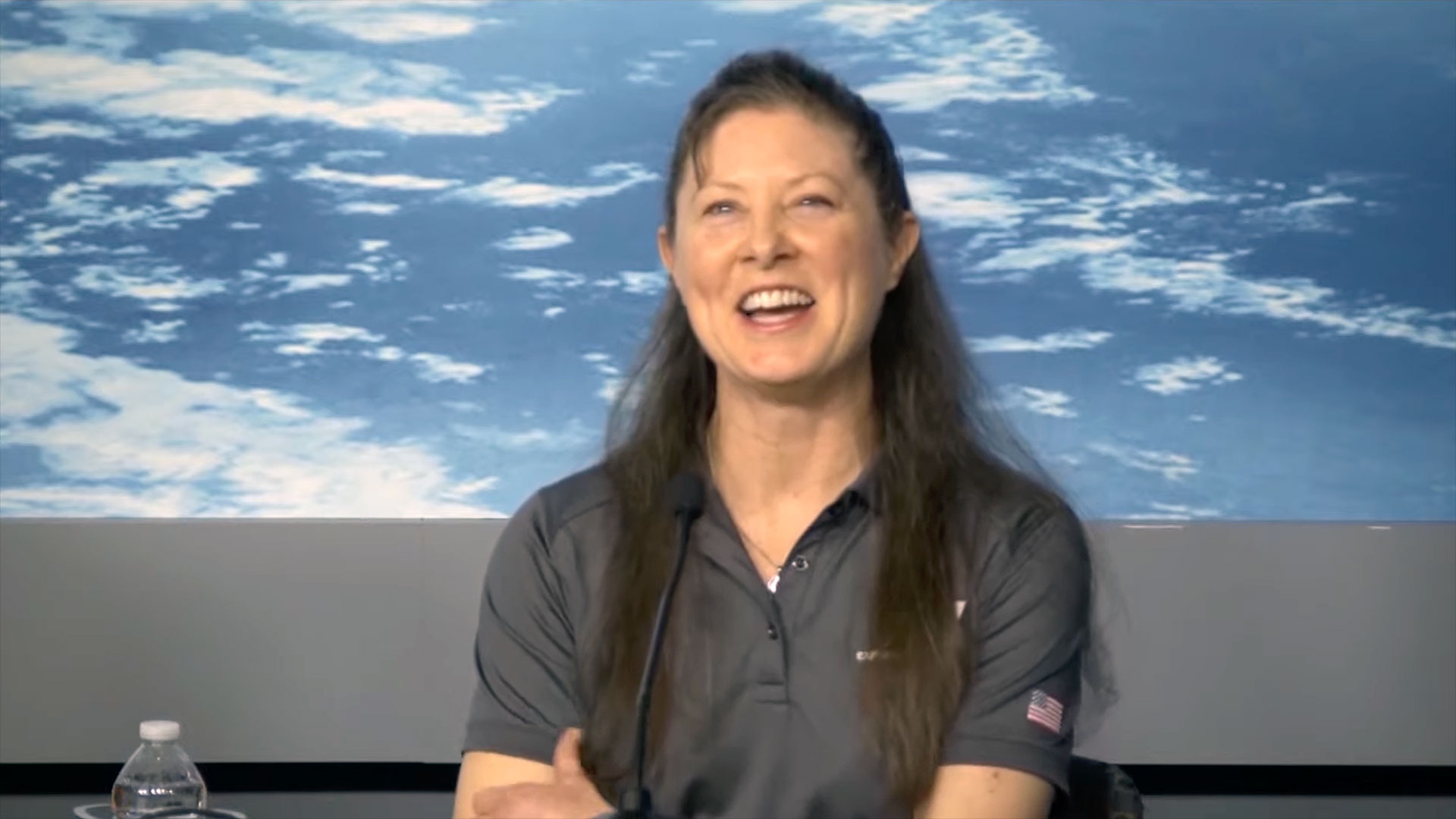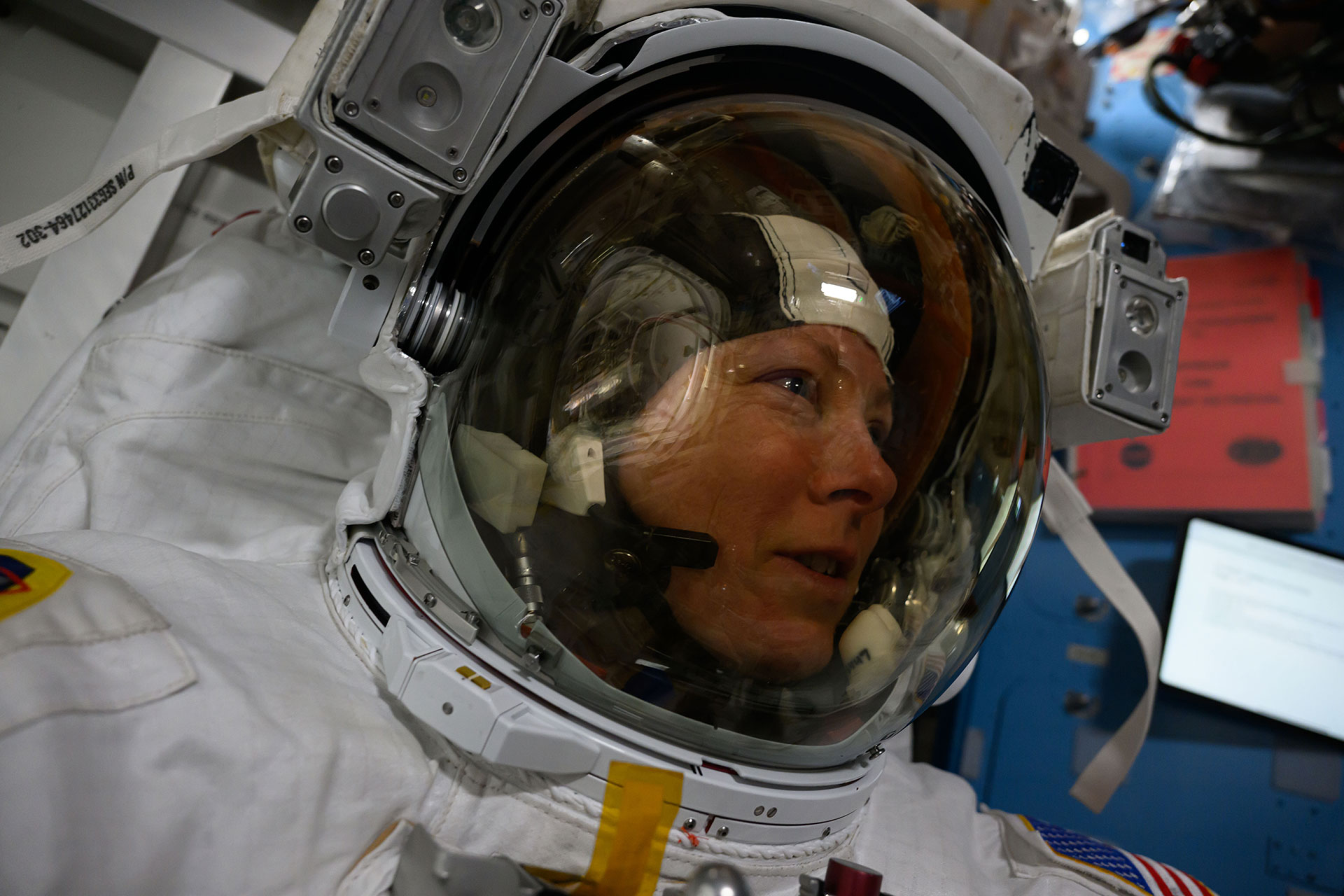Scrubbed spacewalks, Starliner stay-overs and more: NASA astronaut Tracy C. Dyson discusses her eventful 6 months in orbit
'I am going to hang on to those 31 minutes as some of the most character-building moments of my life in space.'

Out of the 184 days that NASA astronaut Tracy Caldwell Dyson logged on her most recent mission on board the International Space Station, there are 31 minutes that stand out to her as being among her finest.
Dyson reflected on her time in space during a post-flight press conference at NASA's Johnson Space Center in Houston on Friday (Oct. 4). She returned to Earth less than two weeks ago on a Russian Soyuz spacecraft that touched down in Kazakhstan.
"It is in some ways emotionally hard to talk about my spacewalks, because the two attempts that we made didn't result in clearing the objectives that we had going in," she said, replying to a question from Space.com. "But personal feelings aside, those two attempts were a great moment for us as a team, both on orbit and with the interactions that we had with our team on the ground."
A member of the NASA astronaut corps since 1998, Dyson's previous long-duration stay on the space station was 14 years ago. In interviews she gave prior to her launch in March, she said she was looking forward to going out on a few EVAs (extravehicular activities, or spacewalks), and three outings were indeed planned.
Related: Spacewalks: How they work and major milestones
But, as she also said at the time, "things just have a way of changing when you get up there."
"On our first attempt … my partner, Matt Dominick, had some suit issues that were too important to take care of before going out into the vacuum," Dyson said on Friday, referring to a "spacesuit discomfort issue" that occurred on June 13.
Breaking space news, the latest updates on rocket launches, skywatching events and more!
NASA replaced Dominick with Michael Barratt for the next try, citing that Barratt already had a suit sized to him. Dyson and Barratt were to go out and achieve the same tasks — bringing in an antenna and doing some microorganism swabbing ("a Covid test for the International Space Station," quipped Dyson), but they never got beyond opening the hatch.
"On the second attempt, it was … the station's umbilical that provides cooling and data and oxygen that had a leak. It wasn't discovered until removing the umbilical once we were at vacuum in the crew-lock," Dyson told Space.com. "All of the events that happened in that period of time were very character-building for me, but also I felt during those moments were some of the finest in terms of communication, and that is what I think human interactions are all about — is communication."
"Nothing was more important to me during that period of time than being able to communicate — not just with the ground, but with my crewmate Mike Barratt who was in the crew-lock with me, as well as the rest of our crew," she said.
Communications were key, Dyson explained, because she was the only person who could see what was happening. Barratt's and her helmet cameras were not yet turned on, and the exterior-mounted video cameras did not have a good angle into the crew-lock.
"Basically, it was a firehose of water and slush coming out my umbilical and it covered my visor with ice, so I could not see what was going on. It took a few microseconds to figure out what needed to be done," said Dyson. "Suffice it to say, it was great teamwork that brought us in in 31 minutes, and I am going to hang on to those 31 minutes as some of the most character-building moments of my life in space."
Beyond that half hour, Dyson recounted some of the highlights of her time on serving on station's Expedition 70 and Expedition 71 crews. Saying that the work, alone, was worth the time she spent off the planet, Dyson spoke about using the station's bio fabrication facility to 3D-print cardiac and meniscus tissue samples; overseeing the departure of a Northrop Grumman supply ship named for a late class member of hers; and adjusting to the extended amount of time that Boeing's Starliner crew spent aboard the station rather than return to Earth after as little as a week to close out the troubled test flight.
"For me — and I know for Suni [Williams], too, because we'e close friends — it was somewhat bittersweet. I wanted her to stay, and she wanted to stay," said Dyson. "I think that the way we handled it is the way we handle any unexpected event, which we as astronauts, as a space program, are always prepared to handle, and that is, we went with the flow."
Related: Starliner: Boeing's next-generation spaceship for astronauts
Dyson also waxed a bit about witnessing the 2024 North American total solar eclipse from orbit and shared what became one of her favorite meals.
"I used to make a tortilla with beef brisket and braised red cabbage, if you can believe that," she said with a laugh.
According to a schedule released by Roscosmos, Russia's federal space corporation, Dyson may be one of the last Americans to fly on the Soyuz. After a planned flight by NASA astronaut Jonny Kim next year, the Soyuz human flights announced through 2026 have all-Russian crews.
"In my personal opinion, I think [the crew exchanges] strengthen our partnership with them, and it translates to the work that we do on orbit as a crewmate as well," Dyson said.
"All that we go through in training, not just sitting in a simulator, but through all the water and land survival and all the hard things that we do, from the day to day to seeing each other … really translates well into the relationships and working environment that we have on board station," she added. "So, from that perspective alone, I would hope that we would be able to continue flying doing this trade of Soyuz and U.S. commercial crewmembers."

Robert Pearlman is a space historian, journalist and the founder and editor of collectSPACE.com, a daily news publication and community devoted to space history with a particular focus on how and where space exploration intersects with pop culture. Pearlman is also a contributing writer for Space.com and co-author of "Space Stations: The Art, Science, and Reality of Working in Space” published by Smithsonian Books in 2018.
In 2009, he was inducted into the U.S. Space Camp Hall of Fame in Huntsville, Alabama. In 2021, he was honored by the American Astronautical Society with the Ordway Award for Sustained Excellence in Spaceflight History. In 2023, the National Space Club Florida Committee recognized Pearlman with the Kolcum News and Communications Award for excellence in telling the space story along the Space Coast and throughout the world.



